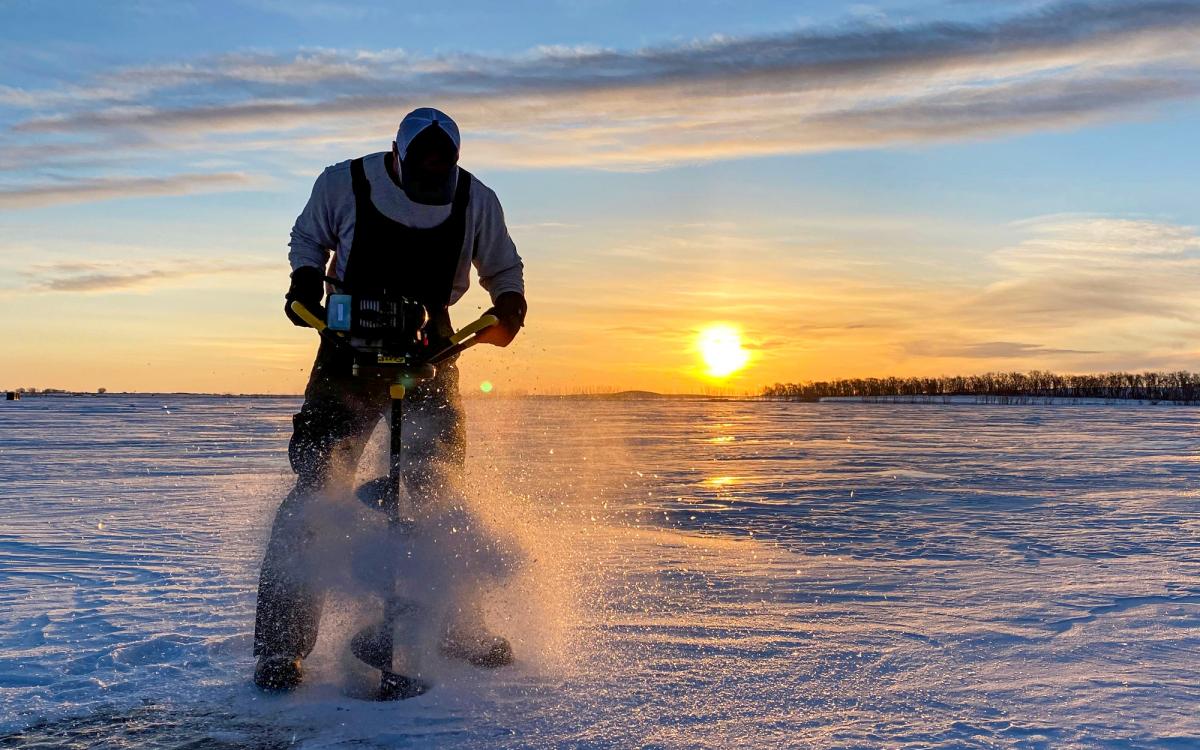Mastering the Art of Ice Fishing: Proven Tactics for a Successful Frozen Adventure

Ice fishing is a unique and exhilarating sport that requires a combination of patience, skill, and knowledge. As winter descends and the lakes freeze over, anglers don their cold-weather gear and head out onto the ice in pursuit of their favorite fish. But success in ice fishing isn’t just a matter of drilling a hole and dropping a line. It involves a deep understanding of the tactics and techniques that maximize your chances of a successful catch.
In this article, we’ll explore the tactics of ice fishing, from gear selection to location scouting, to ensure that you have a productive and enjoyable experience on the frozen water.
Choose the Right Gear
The first and most crucial aspect of ice fishing is selecting the right gear. Your success on the ice largely depends on the equipment you use. Here are some key pieces of gear to consider, including high-quality options from Piscifun:
- Ice Fishing Rods: Ice fishing rods are shorter and more sensitive than traditional fishing rods. They’re designed to handle the harsh conditions and provide the finesse needed for ice fishing. Choose a rod that suits your target species and fishing style.
- Ice Fishing Reels: Ice fishing reels are designed to withstand extreme cold and have a smooth drag system. Look for a reel that matches your rod and line weight.
- Ice Auger: An ice auger is essential for drilling holes in the ice. Hand-powered augers are more portable, while gas or electric augers are quicker for drilling multiple holes.
- Ice Shelter: To protect yourself from the elements, consider investing in an ice shelter. These come in various sizes, from small pop-up tents to larger, heated shelters.
- Ice Fishing Line: Use specialized ice fishing lines that are less prone to freezing and remain sensitive in cold water.
- Tip-ups or Tip-downs: These devices help you fish multiple holes simultaneously, increasing your chances of success.
- Bait: Depending on your target species, stock up on bait like minnows, waxworms, or artificial lures.
Scout the Right Location
Successful ice fishing begins with choosing the right location. Before you venture onto the ice, do your research and look for a few key factors:
- Ice Thickness: Always ensure the ice is thick enough to support your weight and gear. A minimum of 4 inches is considered safe, but thicker ice is preferable, especially for larger bodies of water.
- Topography: Understanding the underwater terrain can be a game-changer. Invest in a good fish finder or consult local fishing reports to identify drop-offs, weed beds, and other fish-holding structures.
- Local Knowledge: Tap into the wisdom of experienced ice anglers in your area. They can provide insights into the best fishing spots and the species that are most active.
- Regulations: Make sure you are aware of local fishing regulations and follow them diligently. This includes knowing the catch limits, size restrictions, and open seasons for your target species.
Timing Is Everything
Timing is crucial in ice fishing. Fish are often more active during specific times of the day. Dawn and dusk are generally productive periods, but this can vary by species. For example, walleye and perch are often more active in low-light conditions, while panfish might be more cooperative during midday.
Additionally, the time of the ice fishing season matters. Early in the season, when the ice is just forming, fish are usually more active and closer to the surface. As winter progresses, they might move deeper. Knowing the behavior of your target species and adjusting your fishing hours accordingly can make a significant difference in your success.
Use the Right Techniques
Ice fishing techniques differ from open-water fishing. Some popular techniques include:
- Jigging: This involves imparting action to your bait by moving your rod up and down. It’s a common method for catching species like perch and walleye.
- Dead Sticking: This is the opposite of jigging. You let your bait sit still, often near the bottom, and wait for fish to come to it. It’s particularly effective for more passive species like catfish.
- Tip-up Fishing: Tip-ups are devices that hold your line in place until a fish takes the bait. When a fish bites, the flag on the tip-up pops up, signaling that it’s time to set the hook.
- Set Line Fishing: This method involves setting a baited line at a specific depth and leaving it for a prolonged period. It’s effective for species like lake trout.
Be Patient and Stay Safe
Patience is the name of the game in ice fishing. It’s not uncommon to spend hours without a bite, but when you do, it’s often worth the wait. While waiting, keep warm by dressing in layers, staying active, and bringing hot beverages and snacks.
Safety should be your top priority. Always let someone know your fishing plans and whereabouts. Check the ice thickness regularly, especially if you’re moving to different locations. Wear a life jacket, carry ice picks for self-rescue, and have a throw rope on hand.
Conclusion
Ice fishing is an incredible outdoor pursuit that combines the beauty of winter with the thrill of angling. To master this unique sport, you need the right gear, location scouting skills, proper timing, and a solid understanding of fishing techniques. With the right tactics and some patience, you can enjoy a successful and rewarding ice fishing experience, even in the coldest of winters. So bundle up, head out onto the ice, and discover the joys of ice fishing for yourself.




